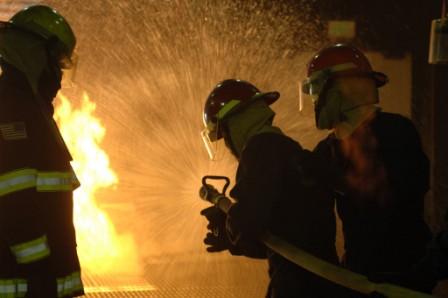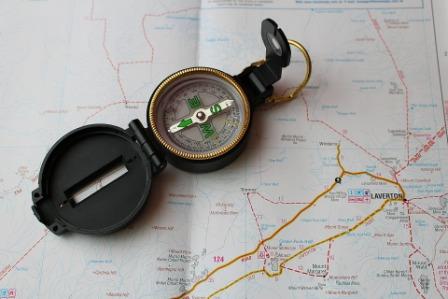Fire Integrity Of Bulkhead
In order to achieve the fire safety objectives, the regulations include certain functional requirements:
- Division of ship into main vertical zones by thermal and structural boundaries,
- Separation of accommodation from the remainder of the ship by thermal and structural boundaries,
- Restricted use of combustible material,
- Detection of any fire in the zone of origin,
- Containment and extinction of fire in the space of origin,
- Protection of means of escape and access for firefighting,
- Ready availability of fire-extinguishing appliances,
- Minimization of the possibility of ignition of flammable cargo vapour.
A STANDARD FIRE TEST is one in which a specimen of a bulkhead or deck is exposed in a test furnace to a temperature corresponding approximately to the standard time-temperature curve given below.
- The specimen must have an exposed area of 4.65 m2 and a height or deck length of 2.44m,
- It must resemble the intended construction as closely as possible,
- It must have at least one weld joint
NON-COMBUSTIBLE MATERIAL: it is one which neither burns nor gives off flammable vapors in sufficient quantity for self-ignition when heated to approximately 750oc.
SERVICE SPACE is those spaces used for the galley, pantries containing cooking appliances, lockers, mail and special rooms, storerooms, workshops outside the machinery space and similar spaces including trunking to these spaces.
SPECIAL CATEGORY SPACES are those enclosed vehicle spaces above and below the bulkhead deck, into and from that vehicles are often driven and to that passengers have access. Special class areas could also be accommodated on more than one deck as long as the entire overall clear height for vehicles don’t exceed 10m.
CENTRAL CONTROL STATION: is a station in which the following stations are located:
- Fire detection and fire alarm system,
- Automatic sprinkler, fire detection, and fire alarm system,
- Fire door indicator panels,
- Fire door closure,
- Watertight door indicator panels,
- Watertight door closures.
- Ventilation fans,
- General/fire alarms,
- Communication systems including telephones,
- Microphones for public address systems.
A-CLASS DIVISIONS (are bulkheads or decks which are)
- Made of steel or equivalent material,
- Suitably stiffened,
- Constructed so as to prevent the passage of smoke and flame to the end of the 1-hour standard fire test,
- Tested in accordance to the ftp code to ensure it meets the above requirements for integrity and temperature rise.
- Insulated with a suitable non-combustible material so that the average temperature of the unexposed side does not exceed more than 140oc above the original temperature nor will the temperature of any point including a joint rise by more than 180oc above the original temperature within the time listed below:
A 60 class 60 minutes
A 30 class 30 minutes
A 15 class 15 minutes
A 0 class 0 minutes
B-CLASS DIVISIONS (are those bulkheads, ceilings, decks or lining which are)
- Constructed of approved non-combustible materials including all materials used for their erection except that combustible veneers may be permitted,
- Capable of preventing the passage of flame only for the first half hour of the standard fire test,
- Tested in accordance with the ftp code to ensure it meets the above requirements for integrity and temperature rise,
- Insulated so that the average temperature of the unexposed side does not exceed more than 140oc above the original temperature nor will the temperature of any point including a joint rise by more than 225oc above the original temperature within the time listed below:
B 15 class 15 minutes
B 0 class 0 minutes
C-CLASS DIVISIONS
- These are constructed of approved non-combustible material,
- They need not meet requirement for the passage of smoke or flame or heat,
- Combustible veneers are permitted provided they meet the requirements as specified.





AMAZING AND GREAT BLOG THINKING OF THE AUTHOR LOOKS SO REALISTIC AND THE DISCRIPTION IS ALSO GOOD